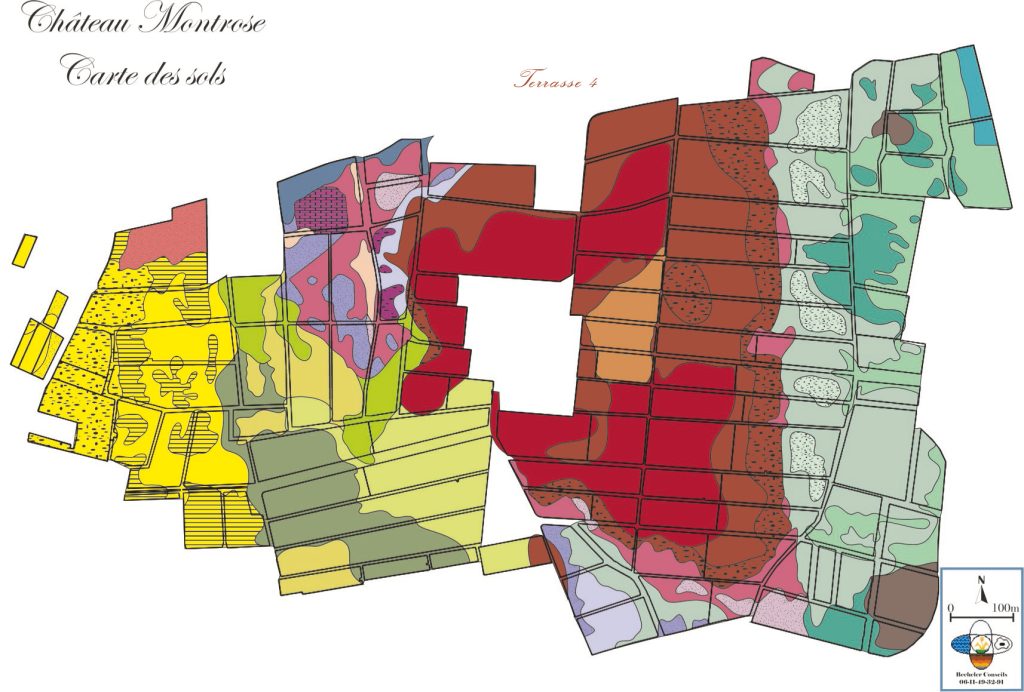This website uses cookies so that we can provide you with the best user experience possible. Cookie information is stored in your browser and performs functions such as recognising you when you return to our website and helping our team to understand which sections of the website you find most interesting and useful.
Montrose to source grand vin exclusively from ‘iconic’ Terrace 4
Château Montrose in St Estèphe has revealed that its grand vin will be sourced entirely from Terrace 4, the unique terroir at the heart of the historic estate, from the 2023 vintage, making it it the only wine to be sourced exclusively from what is recognised as Médoc’s very finest terroir.

In the heat of an en primeur campaign it is often easy to miss or overlook big announcements of enduring significance – especially when they are not about prices or the prevailing market conditions.
Perhaps the biggest purely vinous news of the campaign came from Montrose. And it is worth taking a moment, after the short lull in a frenetic campaign offered by Vinexpo Asia, to take stock of that announcement. For it has certainly received less attention than its significance warrants.
The news is that, from now on and starting with the 2023 vintage, the grand vin of Montrose will be sourced entirely from the iconic and unique terroir that is Terrace 4, the heart of this historic estate since its founding in 1815. This makes it the only wine to be sourced exclusively from what is almost universally regarded to be the Médoc’s very finest terroir.
That sounds important, but it perhaps also sounds just a little nerdy. That Montrose will, forthwith, be sourced entirely from Terrace 4 might seem to be of little more than purely technical interest. But it is not. And to appreciate fully its significance we need a little geological contextualization.
The Médoc: a mosaic of terraced terroirs
The Médoc is a mosaic of terroirs, comprised of a series of terraces themselves shaped and ultimately deposited by the river.
Over a period of several millions of years the Gironde quite literally crafted, sculpted and formed what now represent the terroirs of the Médoc. In a succession of cycles, the river first excavated its bed from the underlying rock strata (during consecutive ice age periods) and subsequently deposited clay, gravel and sand (during interglacial interludes).
Each cycle produced a new terrace, with the extended geological process ultimately laying down the 6 terraces which today configure the topography of the region and its vineyards and terroirs. Each terrace has its own soil characteristics and typicity, contributing to the rich diversity of the terroirs that make the Médoc perhaps the world’s single greatest wine-growing region.
Yet of the six terraces it is Terrace 4 that is the most prestigious. A sense of this is gained if one simply considers the identities of the properties which ripen their very best (typically Cabernet) fruit on their Terrace 4 holdings. These include Margaux, Latour and Léoville-Las-Cases.
The bottom line is that what makes Terrace 4 so legendary, perhaps the finest single terroir of the Bordeaux region, is its capacity to produce the most perfect growing conditions for the slow ripening of Cabernet Sauvignon.
Back to the future

Of Montrose’s single-block of 95 hectares, 45 are located on Terrace 4. This has always been seen as the most precious part of the vineyard, and one of the Médoc’s greatest single terroirs.
It is the highest in terms of the proportion of clay and is also characterised by the presence of compact iron layers (an iron ‘pan’, in effect) which prevents the deep rooting of the vines. Instead, the plants’ root systems develop horizontally, remaining as a consequence closer to the surface. The clay gives water back to the vines through a capillary process, maintaining a controlled and balanced yet constant condition of hydric stress. It is this unique property that makes Terrace 4 particularly apt for the optimisation of the potential of Cabernet Sauvignon in the Médoc. Crucial, too, is the quality of the Cabernet Sauvignon here – all massal clone Cabernet sourced from Montrose itself, the DNA of Terrace 4 – a Cabernet of complexity, elegance and power.
Montrose’s Terrace 4 holdings also represent the historic heart of the property, where the very first vines were planted at its creation in 1815. It has always offered the optimal conditions for the development of Montrose’s star grape variety, Cabernet Sauvignon. And, indeed, it is also from this part of the estate that Montrose takes its name. Mont-rose, literally ‘the pink mount’ or ‘hill’ refers to the pink flowers of the heather that grew wild before the property was founded.
2023 is, then, a return to the essential for Montrose, and the culmination of a longer term process which has seen the selection for the grand vin grow increasingly in severity and become, in the process, more and more based on Terrace 4. It also marks a return to the finest traditions or the property, in the sense that these historic parcels closest to the château were also those initially classified in 1855.
To get the most from this historic DNA, Pierre Graffeuille and his team have meticulously redesigned the blend for the first wine. Until now, Montrose has been made from the best batches of the entire vineyard. But from now on, and for the first time in 2023, Montrose will now come entirely from the plots on Terrace 4 itself. As a consequence, we see the strictest plot selection in Montrose’s history and a return to the original expression of its founding terroir.

Montrose 2023 (St-Estèphe; 75% Cabernet Sauvignon; 21% Merlot; 4% Cabernet Franc; pH 3.7; 13.5% alcohol; for the first time at least in recent history the grand vin in 2023 is sourced exclusively from the 45 hectares of vines planted on Terrace 4, the historic core of the vineyard as classified in 1855; a wine from the 12 hectares planted on Terrace 3 will be released separately; with such a strict self-imposed selection; in 2023 just 35% of the total production enters into the grand vin). Divine. Limpid, lithe and incredible in both its hue and radiant clarity in the glass. Cassis. Blueberry. Bramble and assorted dark berry fruits. Damson and damson skin. Walnut. Olive oil and black pepper. A wine of such incredible purity and elegance, a most intense and refined fruit, so picture perfectly pixilated in its precision. Not overly ample, with quite a tight and well-formed frame at first but with the more gorgeously glacial and crystalline texture and such intensity and layering. A miraculous mirror pool, charged with energy and a wondrous elegance. So pure. So fine. So audacious. So utterly breath-taking. The potential wine of the vintage. Poetry. 98-100.

